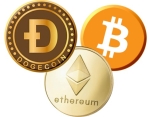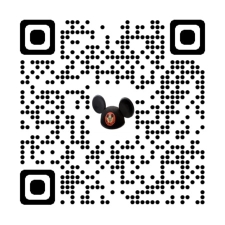It Will Never Work 5 Nowhilarious Things Walts Competitors Said About Disneyland And Lessons Todays Executives Should Learn
ID:
TMS-5141
Source:
themeparktourist.com
Author:
Dateline:
Posted:
Status:
Current
Today, the top three most-visited theme parks on Earth are all "Disneylands." Just about every park built "A.D." (that is, After Disneyland) borrow in one form or another from its model, layout, or attractions. So it's easy to forget that once upon a time, Disneyland was a risk... one that industry experts were certain was doomed to fail.
Our friends at The Park Database compiled a very interesting list of quotes from Walt's very own 1950s competitors shared at a Buzz Price focus group. In retrospect, obviously, these amusement park operators' ideas about what would and wouldn't work about Disneyland are downright hilarious... but they're also very telling.
It's important to remember how seriously unusual Disneyland was, and how designers "writing the rules" as they went was a gargantuan financial and reputational risk. Each of the quotes below are from real amusement park operators who went on the record before Disneyland's opening. Obviously, they ended up being wrong. But the point remains that writing new rules isn't easy, and when a leader without vision comes to head up the parks, they might not have the courage to think outside the box like Walt did...
1. "All the proven moneymakers are conspiculously missing..."
"... no roller coasters, no Ferris wheel, no shoot-the-chutes [...] no carny games like the baseball throw."
The single entrance gate "will create another terrible bottleneck. Entrances should be on all sides for closer parking and easier access."
You have to remember that before Disneyland, amusement parks had a very different place in the public consciousness. From oceanfront pleasure piers to lakeside boardwalks; urban "trolley parks" to rural traveling fairs, most amusement parks had developed slowly... from dancehalls and sunlite pools of the late 1800s to electrical marvels of the turn-of-the-century. But by the 1950s, most amusement parks were associated with trouble. Filled with carnival rides, trickster midway games, poor upkeep, and "carny" ride operators, these parks were often open to the public to stroll through, drawing trouble-making teens.
So when Walt famously told his wife Lillian he was interested in creating an amusement park himself, she replied, "Why would you want to get involved in an amusement park? They're so dirty, and not at all fun for grown-ups." Walt replied that that was exactly his point – his park would be different than that. And to Schmidt's point, it was! Walt purposefully scouted for sites far from beaches and the "barefoot crowd"; he charged an entry fee (in 1955, $1); and rather than being built by "carnies," his park was designed by filmmakers... no coasters, Ferris wheels, shoot-the-chutes, or carny games needed.
Obviously things have changed. For the most part, Imagineers have figured out how to use those more common tools of the amusement trade in innovative-enough ways. (Few would call Big Thunder Mountain, Expedition Everest, or even TRON Lightcycle Run "just" a roller coaster.) But there are exceptions. For example, designers must've forgotten that Disneyland was built as a counterpart to carnivals, boardwalks, and backlots when they designed Disney California Adventure's initial Paradise Pier, which featured nearly everything on Schmidt's list.
2. "Without barkers along the midway to sell the sideshows, the marks won't pay to go in."
Two of Walt's revolutions can be seen in this statement.
First, the way Walt thought about visitors to his park. Whereas amusement park vendors and operators of the day would literally think of potential customers as "marks" – like targets to be lured in and swindled for money – Walt Disney thought of visitors to Disneyland as 'guests.' Though the full theatrical terminology ("on-stage," "backstage," "Cast Member") wouldn't come online for years, that idea of guests was certainly a relevation... that maybe Disneyland's purpose was not to wring every cent out of a visitor, but to make them feel comfortable and at home.
Second, the traditional amusement park model relied on competing vendors to lure those "marks" to their rides, games, and food over any others – hence the bright lights, big marquees, and attention-grabbing carnival tricks of the classic amusement park. But one of the best sells was, of course, the "barker" – an employee who would stand along the midway, ushering guests toward their company's offerings. Think, "Hurry, hurry hurry! Step right up! Step right up!"
Disneyland did house lots and lots of vendors during its first decades, when most of the park's restaurants and shops were leased out to partners. But those vendors were integrated into the whole of the park rather than serving as competing parts within it.
Ironically, Disney did end up employing a few carnival barkers... but maybe not in the way you'd expect. When the Enchanted Tiki Room opened in 1963, a "Barker Bird" was positioned outside of the attraction. After all, nothing else could convey to audiences of the 1960s what resided within. (The Tiki Birds, remember, were the first ever Audio-Animatronics.) Of course, the Barker Bird didn't last long, since audiences stopped to gawk at the fantastic feathered creature, clogging the entrance to Adventureland. A barker did make a return to Disneyland, though, when Toy Story Midway Mania opened at California Adventure in 2008, bringing with an Audio-Animatronic Mr. Potato Head, who challenges guests to "Step right up" off the boardwalk to play some carnival games... a historically-accurate idea!
3. "Custom rides will never work... besides, the public doesn't know the difference or care."
Though the industry of amusement rides looked very different in the 50s, there were still tried-and-true classic ride manufacturers and off-the-shelf ride models that vendors could pick out of catalogues and have installed on-site. Don't misunderstand – Disneyland did have plenty of that! (See Fantasyland's spinners and dark rides, whose ride systems were all "off-the-shelf.")
But rides like the Jungle Cruise and the Riverboat and Rocket to the Moon were custom creations completely... And obviously, those are the rides that Disney is known for. Sure, today there are dozens and dozens of ride manufacturers whose "off-the-shelf" offerings are essential components of ride lineups at parks around the globe, including Disney's! But likely with Disneyland as the impetus, hundreds of companies exist to furnish "custom rides", not the least of which being Walt Disney Imagineering and Universal Creative. Those firms, in turn, contract with countless others, creating an entire industry and economy based around theme parks, experiential attraction, museums, and more.
Put another way, "custom rides" turned out to be a smart business, and it turns out that people do notice and care.
4. "Things like the castle and pirate ship are cute, but that aren't rides so there's no economic reason to build them."
Here, Walt's detractors are exactly right. There's no direct, economic reason to build a castle, or a pirate ship, or the Cadillac Range or floating mountains. By all accounts, these are superfluous. Space Mountain, one could argue, could just as easily be placed in a big ole' box and it wouldn't make a difference to the ride experience.
But of course, as Walt's early designers knew and as we all know now, there's so much more to Disney Parks than the ride experience alone. It all goes back to that idea of a park built not by vendors or "carnies" or amusement park folks, but by filmmakers and storytellers and artists. So sure, there are definitely folks who could walk through Frontierland today and say "Yeah, yeah, yeah, but where's the roller coaster?" For them, there are dozens and dozens of perfectly wonderful amusement parks across the country to scratch that itch. Disney Parks, though, were able to be something else entirely, and it's because of things like castles and mountains and pirate ships.
It's almost funny to hear Walt's contemporaries suggest that Disneyland's castle is merely "cute" but has no economic incentive... it's because the icon of a multi-billion-dollar entertainment company! The question we've got to ask is – if The Walt Disney Company were building its first theme park today, would it bother to build a castle as the park's center? Or would current leadership agree that there's no economic reason to do so?
5. "Walt's screwy ideas about cleanliness and great landscape maintenance are economic suicide...
...He will lose his shirt by overspending on things the customer never really notices."
As Disney legend goes, initial plans drawn up for the Haunted Mansion at Disneyland were of a tattered, mossy old home on the edge of town; a ramshackle mansion of shattered windows and tattered curtains. It made sense. One would expect a Haunted Mansion to be dirty and desolate and rundown, right? The ride's outside would help communicate what was inside.
But Walt rejected the idea, famously insisting that "We'll take care of the outside, and let the ghosts take care of the inside." It may sound silly, but even in the ?s, Walt still kept to that idea that he had a lot to prove. He didn't want any part of his park to look overgrown or unkempt, even if the company could find an "excuse" to do so. (One of the original Haunted Mansion designers famously said of Disneyland Paris' Modern Marvel: Phantom Manor and its aged, overgrown exterior, "Walt never would've approved.")
Walt even went so far as to ban sales of gum in his park, having seen how dropped and trampled gum had ruined the pathways at other amusemement parks, and how stepping in a freshly-chewed wad of it could so quickly turn a day sour. (To this day, gum is not sold in Disney Parks.)
And in some ways, the "screwy" idea of changing out planters for each season, keeping the park immaculately painted and weeded and mowed, and making trash cans plentiful and routinely emptied is still revolutionary among parks. It's not that Disney always gets it right. (Check Twitter and you'll find plenty of photos of overflowing trash cans.) But the mere idea that fans continue to expect such a high standard from Disney Parks is important, and points to just how much customers really do notice...
The Disney Difference
Seventy years ago, Walt faced an uphill battle in communicating his ideas of what Disneyland could be. Today, the foundations, concepts, and standards of a Disney theme park are so well known that the objections of Walt's 1950s peers look hilariously out-of-touch.
But it's important to remember ourselves (and to remind today's executives) that what made Disney so unique then is something we still need to strive for today. In an era of slashed perks and new upcharges, a "franchise-focus" that seemingly prohibits any custom ideas or Imagineer-made IPs, lowered standards for things like cleanliness, upkeep, and maintenance in the name of per capita spending, and rising competition from Universal, there's no guaruntee that Disney Parks will be on top forever.
Somewhere in these laughable pieces of "advice" Walt's competitors gave him in the 1950s, there's a question of what will keep Disney Parks special in the 2050s...
Attractions Referenced In This Article:
Restaurants Referenced In This Article:
Lands Referenced In This Article:





